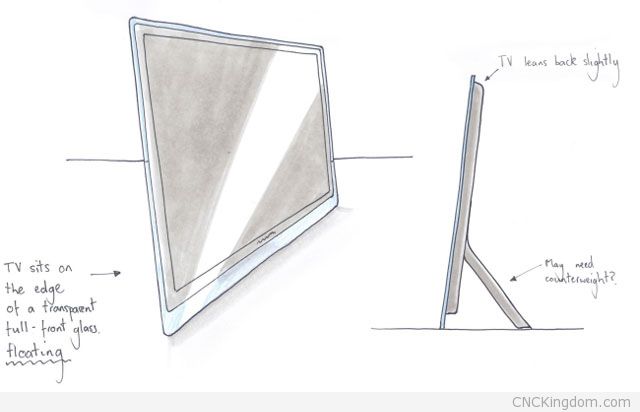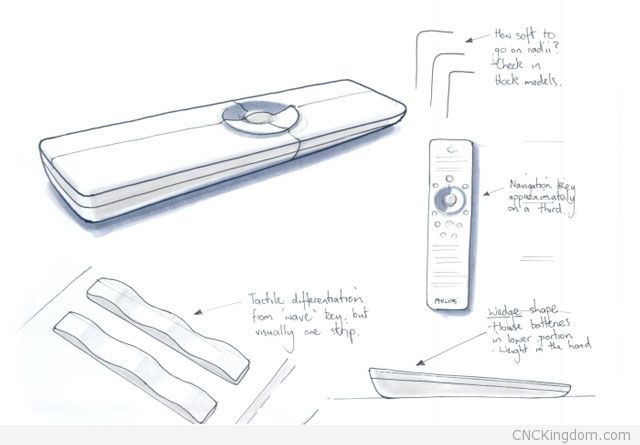Anthony Smith, Freelance Product & Industrial Designer (UK)
Anthony has worked for several firms including Philips Design for several years… he eventually decided to take time off to experience more about the world around him and upon coming back, started his own firm freelancing. He’s gone some awesome designs and a lot to share… here are some key takeaways from this interview.
- He exhibited at a show and it lead to a conversation leading to a 7 year job with Philips Design. Get out there and show your skills!
- He hates the term “consumers” and prefer users or customers… I agree!
- There is a constant balancing act between aesthetics, usability, cost and feasibility.
You can view Anthony’s portfolio and contact him at http://www.coroflot.com/anthonysmith.
How well did your BA (Honors) in Design for Industry from Northumbria University prepare you for the challenges and opportunity in the industrial design field in general? Was there anything in the program that you wished you would have learned about or that was a complete waste of time?
 The Design for Industry course at Northumbria was a fantastic, intense program in design (generally) and specifically in product design. The course allowed enough freedom for each student to branch out into his / her own area of interest, within the areas of product and service design.
The Design for Industry course at Northumbria was a fantastic, intense program in design (generally) and specifically in product design. The course allowed enough freedom for each student to branch out into his / her own area of interest, within the areas of product and service design.
The atmosphere amongst the students was a healthy mix of collaboration and competition, with everyone spurring one another on to raise standards.
The best aspect of the course was the ‘placements’. Northumbria has lots of contacts with industry, and I’d recommend that anyone looking to study design opts for a course with internships/ placements; they’re invaluable.
If the course lacked one thing, I would say- at the time- that it was decent training in 3D CAD software (students generally taught themselves this). However, I know that since I graduated, the facilities and teaching in this area have improved dramatically.
You spent a year in internships before joining Philips Design where you stayed for 7 years… how did the opportunity at Philips Design come-up and what made you want to leave and start your own design firm?
In my second year at University, I spent about 5 months at a small product design and development company in the UK called ‘Design 4’. I learned a lot there about mass production techniques; the team was a small gold- mine of technical knowledge. During this internship I saw 3D printed parts being produced and used to build working prototypes for the first time, which blew my mind. At the time it was crazy to see the process of a laser drawing out a 3D model, layer by layer, and it still is. The process they used a lot was SLS, with nylon powder.
In my third year I was fortunate enough to intern with Teague in the US. They work for some amazing clients, and the design skills of the team there are truly world class. Again, I really learned a lot, which I could bring into my final year at Uni.
As is often the case, a combination of hard- work and luck got me my first design job. The Uni I studied at encouraged the students to take their work down to the ‘New Designers’ show in London, which- as a group- we did. I was fortunate enough to talk my final project through with a guy from Philips who was visiting the show, and I ended up winning the ‘Philips New Designers 2005’ award. From that I had interviews for a permanent position with Philips and secured a job.
I worked for a few years in Eindhoven, in the south of The Netherlands, and then in the Amsterdam studio. Philips is so big that if you move categories it can almost feel like moving jobs, which is what kept me interested in the work for so long. There are some great people within Philips Design and once again, I learned a lot from them.
I traveled a lot while at Philips, with the job- to manufacturing and development sites in Asia, and personally too. I feel that I am really fortunate to have been given that opportunity. However, after 7 years at Philips I had a ‘now or never’ moment and decided to leave in order to travel for an extended period of time, to places I’d always wanted to visit (places that didn’t have factories;).
On returning, I originally looked for a permanent job, but at the time I couldn’t see any vacancies that really suited me, both in terms of content and location. Through requests from ex- colleagues, I kind of ‘fell’ into freelancing and have begun to build a business from there.

I had an awesome interview with Daphne Flynn (Director of Philips Design Singapore) and she enjoys her “job” so much that she made it a career. What is it about Philips Design that attracts so many awesome designers who are really passionate about their work? Are there any aspects of running your own shop that you miss while you worked there?
In the 90s and early 2000s, under the leadership of Stefano Marzano, Philips Design promoted itself as a hub of conceptual thinking, through various conceptual projects. These projects were really ground breaking and I think that they inspired a lot of designers who were passionate advocates of user- centred design. They certainly attracted me!
Of course, in reality, the ‘blue sky’ projects accounted for a small percentage of the work done within Philips Design (much of it was hands- on, shorter term, pragmatic, product design). However, I think that they used the conceptual work cleverly to attract good designers. Also, the thinking and culture of the conceptual projects did filter into the ‘everyday’ work and the wider organisation.
Then there is the fact that Philips Design has such a rich mix of nationalities and experience within its team. I believe that this also attracts people.
Running my own business has its benefits and drawbacks. If I needed to name one thing I would say I miss, it’s probably the collaborative spirit that such a big company has. As a freelancer I try to bring this back by working really closely with my clients.

After leaving Philips Design you spent 7 months traveling the world – I did the same but so far, it’s been 6 years living and traveling in different countries. How did this experience of seeing so many different cultures and places change you? How did it feel after returning and staying put in one place after?
Haha, another ‘design nomad’, good to hear:)
I’ve always been passionate about traveling and experiencing different cultures. I think that, as a designer, this can only help you to understand and empathise with the people you’re designing for.
Traveling also gives me a sense of perspective and helps me appreciate a lot of things we take for granted in the ‘developed’ world. Funnily enough, since returning from my trip, I’ve been traveling a lot with work. Of course, traveling for pleasure and traveling with work are very different things.

You focused on consumer electronics in your design career – what is it about this segment of the market that you enjoy working with so much and what are some of the nuances that you really have to pay attention to when designing for this space? Any major things that a design shouldn’t have if it’s for consumers?
I’m really surprised that we still refer to people as ‘consumers’ rather than ‘users’ or ‘customers’. I do this all the time and a lot of big brands also do. I’m trying not to. I hope that the term ‘consumer’ will become a bit derogatory, slowly but surely, as resources become more scarce… or maybe I’m just an idealistic, guilt-ridden product designer.
More importantly, I think that we should design for people as ‘users’ and not ‘consumers’. As product designers, we shouldn’t lose sight of this, even if we end up working for marketing- driven organisations and clients. People use products after they have bought them, and the resulting experience they have with these products defines the brand in their mind.
In terms of work focus, there are lots of really poorly designed electronic products in the world, so- in my opinion- there is a lot to improve. The problems are complex, especially in the area of handheld products where there is a constant balancing act between aesthetics, usability, cost and feasibility.
It’s tempting to say that a design should have simplicity, but that would be too easy. Sometimes products have to access complex information that, as a designer, you have no control over; like the internet or pre-determined menu systems, for example. In this case, I feel that it’s important not to intimidate or overwhelm the user with information. Even if there is a lot to communicate, it helps to try to break it down into digestible chunks, or layer the info, if possible.

Looking back, what advice would you have given to yourself, fresh out of University, that would have saved you lots of wasted time or helped you skip over some bumps along the road?
- Collaborate and share more often. Don’t be afraid to utilise the skills of others. There are so many talented and knowledgeable people around you who would love to help.
- Don’t be intimidated by arrogant people. Arrogance is not an indicator of ability or talent.
- Don’t work past midnight; it’s wasted effort- and anything you do after this point will probably look disappointing in the morning.

